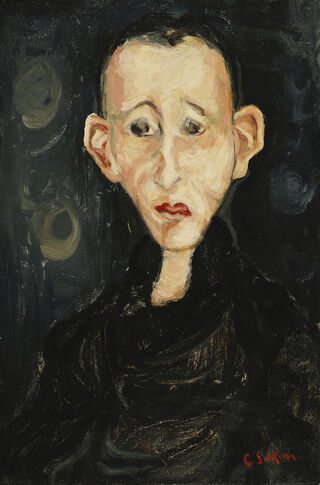Anxiety
Neither Sick Nor Healthy: Patients-in-Waiting
Surveillance medicine has created uncertainty for those at risk.
Posted September 1, 2021 Reviewed by Gary Drevitch
Key points
- Increasingly sophisticated screening techniques can make anyone a patient.
- We can feel well and be asymptomatic but always be aware of the potential for becoming otherwise.
- Being 'at risk' creates a new identity—an uncertain status of no longer being healthy but not really being sick.

“No sense they have of ills to come, Nor care beyond today,” wrote 18th-century English poet and scholar Thomas Gray, whose ode ends with the classic line, “Where ignorance is bliss, ‘Tis folly to be wise.”
For some, knowledge may be power, but it may be a burden, or useless, or may even lead to considerable anxiety and misery for others. In his book, Too Much Information (2020), Cass Sunstein explains that a decision to obtain information, whether on calorie counts or consumer products, or even health, is a gamble and may have consequences. How will receiving this information affect our well-being? Sometimes, paradoxically, we even lack the necessary information that enables us to decide what we should know, and there is a “great deal of heterogeneity” in those of us who seek information and those who avoid it, writes Sunstein.

As we have developed increasingly sophisticated means of diagnostic evaluation, such as through total body scanning or genetic screening, we have created what has been called the tyranny of diagnosis: “Millions of people who might otherwise have lived their lives in ignorance of nemeses lurking in their bodies” and who are asymptomatic and do not feel ill are now confronted with “altered narratives” (Rosenberg, 2007). The information that we may have a disease or recurrence or are at risk of developing one may lead to potentially endless “cascades of referrals and investigations,” sometimes without ever establishing any conclusive evidence of disease (Greaves, 2000).
In their cogent discussion, for example, about the nature of disease itself in the context of whether obesity is a disease, Heshka and Allison (2001) explain that it is not always possible to predict who will develop co-morbidities typically associated with obesity; though clearly at risk, some obese people will never develop any impairment or abnormalities other than excess fat. “We are therefore placed in the conceptually awkward position of declaring a disease, which, for some of its victims, entails no affliction,” they say.

“Being at risk” creates a “blurring of boundaries” (Aronowitz, 2009) and an “uncertain status"—neither sick nor healthy. It is "to feel well, to be asymptomatic, yet always aware of the potential for becoming otherwise" (Scott et al., 2005). A new kind of illness identity characterized by biomedical uncertainty (Sulik, 2009) develops, variously described as the asymptomatic ill (Billings et al., 1992), the partial patient (Greaves), the pre-symptomatic person (Konrad, 2002), or most poetically, a patient-in-waiting (Parry et al., 2004; Rosenberg, 2007; Timmermans and Buchbinder, 2010).
A patient-in-waiting is an “umbrella term” for those under medical surveillance (Armstrong, 1995) who hover “between pathology and an undistinguished state of normalcy” (Timmermans and Buchbinder). When we receive information about risk, particularly genetic risk, our body becomes the subject of molecular gaze (Novas and Rose, 2000).
In effect, though, "we are all patients or patients-in-waiting" (Rosenberg). Or as Sontag writes, "We all possess dual citizenship in the kingdom of the well and the kingdom of the sick."
Being told we are at risk, though, turns us from being a healthy person into a patient, with considerable psychological and social consequences (Schermer and Richard, 2019). The "precarious" feeling creates an "uneasy balance" and "invades" all aspects of our life. We experience a kind of biographical disruption, including rethinking our sense of self and reassessing previously taken-for-granted assumptions and behaviors (Bury, 1982). With a medical label, we become "socially transformed," whereby people view us differently, and we come to view ourselves differently. We may experience social stigma as well as find ourselves excluded from opportunities or benefits. With genetic information, not only are we affected personally, but so are our family members (Novas and Rose).
Further, being at risk often confronts us with the limits of medical expertise: The notion of risk (and a "risk score") introduces a quantitative statistical probability that is far from a certain outcome (Greaves). Rather than a measure of probability, risk itself comes to be seen as an illness and experienced as such (Gillespie, 2012). Knowledge may be empowering "but not when a diagnosis merely affirms risk and offers no cure" now (Kenen, 1996). Further, sometimes we even create new diagnostic categories such as pre-diabetes (Jaujo, 2019) or "proto-diseases" (e.g. elevated blood pressure or cholesterol levels) (Rosenberg) that may involve a "trajectory of medical gatekeeping" (Timmermans and Buchbinder).

There are no norms for being at risk and no “risk role” similar to a sick role. It is to live with a feeling of measured vulnerability. In other words, statistical measures intended "to tame randomness and provide certainty" instead produce uncertainty and anxiety (Gillespie).
In thinking about the power and limits of prediction when given an at-risk diagnosis, I am reminded of Cassandra, the daughter of King Priam of Troy. Apollo gave the gift of prophecy to Cassandra, but when she refused the god's advances, Apollo avenged her by ensuring that no one would believe her prophesies. Perhaps, when confronted with a probability of future disease, even though there may be some truth to the prediction, we are wise to be somewhat circumspect and remember that not every pronouncement is necessarily prophetic.
References
20 References follow in alphabetical order:
Armstrong D. (1995). The rise of surveillance medicine. Sociology of Health & Illness 17(3): 393-404.
Aronowitz RA. (2009). The converged experience of risk and disease. The Millbank Quarterly 87(2): 417-442.
Billings PR et al. (1992). Discrimination as a consequence of genetic testing. The American Journal of Human Genetics 50: 476-482.
Bury M. (1982). Chronic Illness as biographical disruption. Sociology of Health & Illness 4(2): 167-182.
Gillespie C. (2012). The experience of risk as ‘measured vulnerability:’ health screening and lay uses of numerical risk. Sociology of Health & Illness 34(2): 194-207.
Gray T. (1742) Ode on a Distant Prospect of Eton College. https://www.poetryfoundation.org/poems/44301/ode-on-a-distant-prospect-….
Greaves D. (2000). The creation of partial patients. Cambridge Quarterly of Healthcare Ethics 9: 23-37.
Heshka S. and Allison DB. (2001). Is obesity a disease? International Journal of Obesity 25: 1401-1404.
Jauho M. (2019). Patients-in-waiting or chronically healthy individuals? People with elevated cholesterol talk about risk. Sociology of Health & Illness 41(5): 867-881.
Kenen RH. (1996) The at-risk health status and technology: a diagnostic invitation and the ‘gift’ of knowing. Social Science & Medicine 42(11): 1545-1553.
Konrad M. (2003). Predictive genetic testing and the making of the pre-symptomatic person: prognostic moralities amongst Huntington’s-affected families. Anthropology & Medicine 10(1): 23-49.
Novas C and Rose N. (2000). Genetic risk and the birth of the somatic individual. Economy and Society 29(4): 485-513.
Parry O. et al. (2004). Patients in waiting: a qualitative study of type 2 diabetes patients’ perceptions of diagnosis. Family Practice 21(2): 131-136.
Rosenberg CE. (2007) Our Present Complaint: American Medicine, Then and Now. Baltimore: The Johns Hopkins University Press.
Schermer MHN and Richard E. (2019). On the reconceptualization of Alzheimer’s Disease. Bioethics 33: 138-145.
Scott S et al. (2005). Repositioning the patient: the implications of being ‘at risk.’ Social Science & Medicine 60: 1869-1879.
Sontag S. (1978) Illness as Metaphor and AIDS and Its Metaphors. New York: Picador Farrar, Straus and Giroux.
Sulik GA. (2009). Managing biomedical uncertainty: the technoscientific illness identity. Sociology of Health & Illness 30(7): 1059-1076.
Sunstein CR. (2020) Too Much Information: Understanding What You Don’t Want to Know. Cambridge, MA: The MIT Press.
Timmermans S. and Buchbinder, M. (2010) Patients-in-waiting: living between sickness and health in the genomics era. Journal of Health and Social Behavior 51(4): 408-423.


